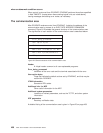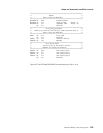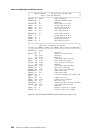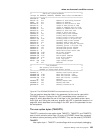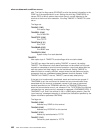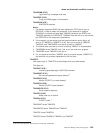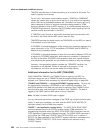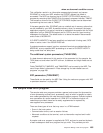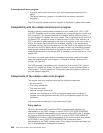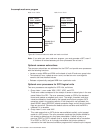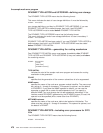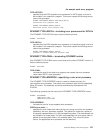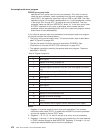
This notification results in an informative message being issued, and causes
DFHZNAC to invoke your NEP, whether the CLSDST request has failed or
succeeded. The NEP can discover that a CLSDST OPTCD=PASS request is in
progress by examining field TWAPFLG for the pass-in-progress indicator, TWAPIP.
The success or failure of the CLSDST OPTCD=PASS request can be determined
by examining the error code at TWAEC.
If the pass operation fails, DFHZNAC sets up a default set of recovery actions that
can be modified by your NEP. A possible recovery, when, for example, the target
application program is not active, would be to reestablish the session with the initial
application using a SIMLOGON request and for CICS to send its “good morning”
message to the terminal. The default action is to leave the session disconnected
and to make it NOCREATE.
If CLSDSTP=NONOTIFY has been specified, and autoinstall is being used, CICS
takes no action, even if the ISSUE PASS fails.
If persistent sessions support is active, autoinstall terminals are deleted after the
AIRDELAY, so any expected NEP processing as a result of CLSDSTP=NOTIFY
being coded does not take place.
The additional system parameters (TWASYSPM)
If a data element referenced in this section of the parameter list (for example, the
TIOA) does not exist when the NEP is driven, its address and length fields are set
to zero.
Fields TWAPNETN, TWAPNTID, and TWAUPRRC can be reset by the NEP. The
use of these fields is discussed in “Data storage key for task-related user exit
programs” on page 268.
XRF parameters (TWAXRNOT)
These fields can be reset by the NEP. See “Using the node error program with XRF
or persistent sessions” on page 480.
The sample node error program
The sample node error program provides a general environment for the execution
of error processing routines (error processors), each of which is specific to certain
error codes generated by the node abnormal condition program. Sufficient optional
error processors for normal operation of VTAM 3270 or interactive logical unit
networks are provided; these can be easily supplemented or replaced by
user-supplied error processors.
There are three types of error that may occur in a VTAM network:
v Errors in the host system
v Communication errors, such as session failures
v Abnormal conditions at the terminal, such as intervention required and invalid
requests.
A sample node error program is supplied with CICS, and can be used as the basis
of each subsequent node error program that you write. This provides you with:
when an abnormal condition occurs
Chapter 9. Writing a node error program 465




